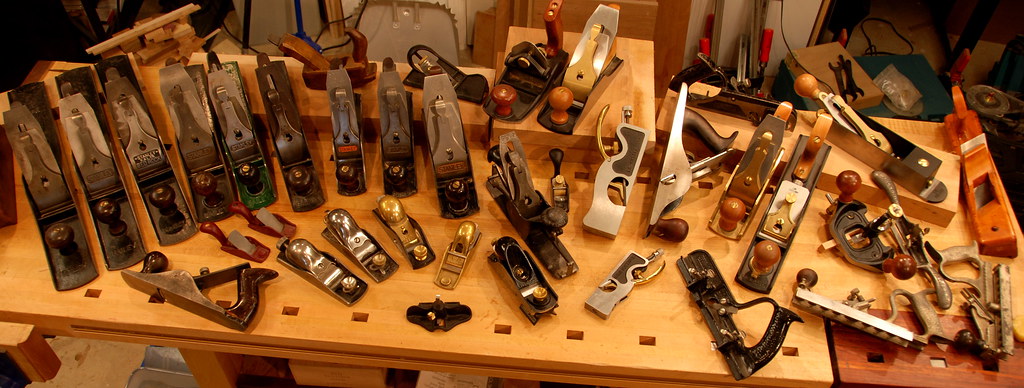Hey Creekers with Callused Hands,
I am a weekend warrior type woodworker and have an extensive collection of powered cast iron tools. With every project I complete, I find myself needing hand tools to increase the quality of my work. The number one thing that I find myself needing is a few good planes. I often have a glue up panel that just needs the slightest of tweaking to level out a seam or a cope and stick or frame door that needs the slightest trim off the end grain of a stile to even things up for an edge profile rout.
That said…I know NOTHING about hand planes. I’ve read a lot but there is so much random info that I’m overwhelmed. So, I want to poll the professionals. I have determined that I think I need one block plane and one smoothing/jack plane (and a shoulder plane down the road). My questions are these.
1. Can anyone point me to their two favorite planes (for the purposes listed above).
2. Assuming that I don’t want to spend more than $200 each for these, which ones would you buy?
3. What is a good sharpening system for under $150 to accompany these bad boys.
4. If I were to buy a 3rd plane, would a shoulder plane be my best choice? (I do a lot of mortise and tenon work)
Thanks in advance!







 Reply With Quote
Reply With Quote



 ).
).



